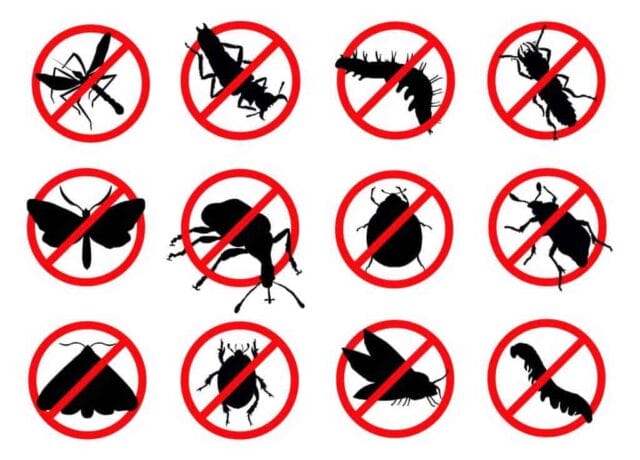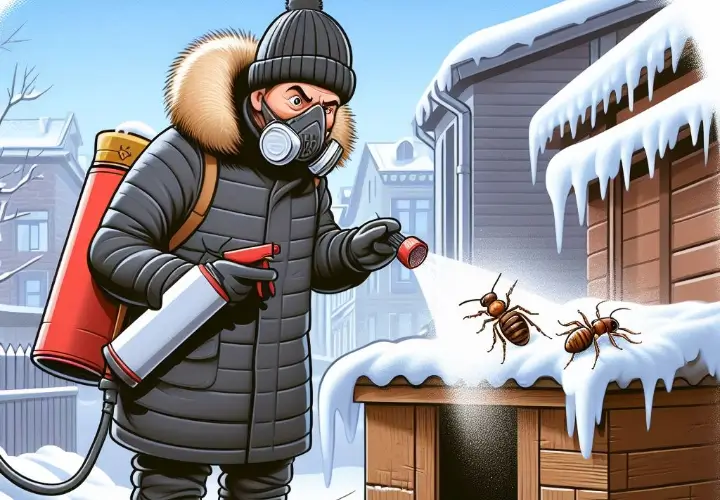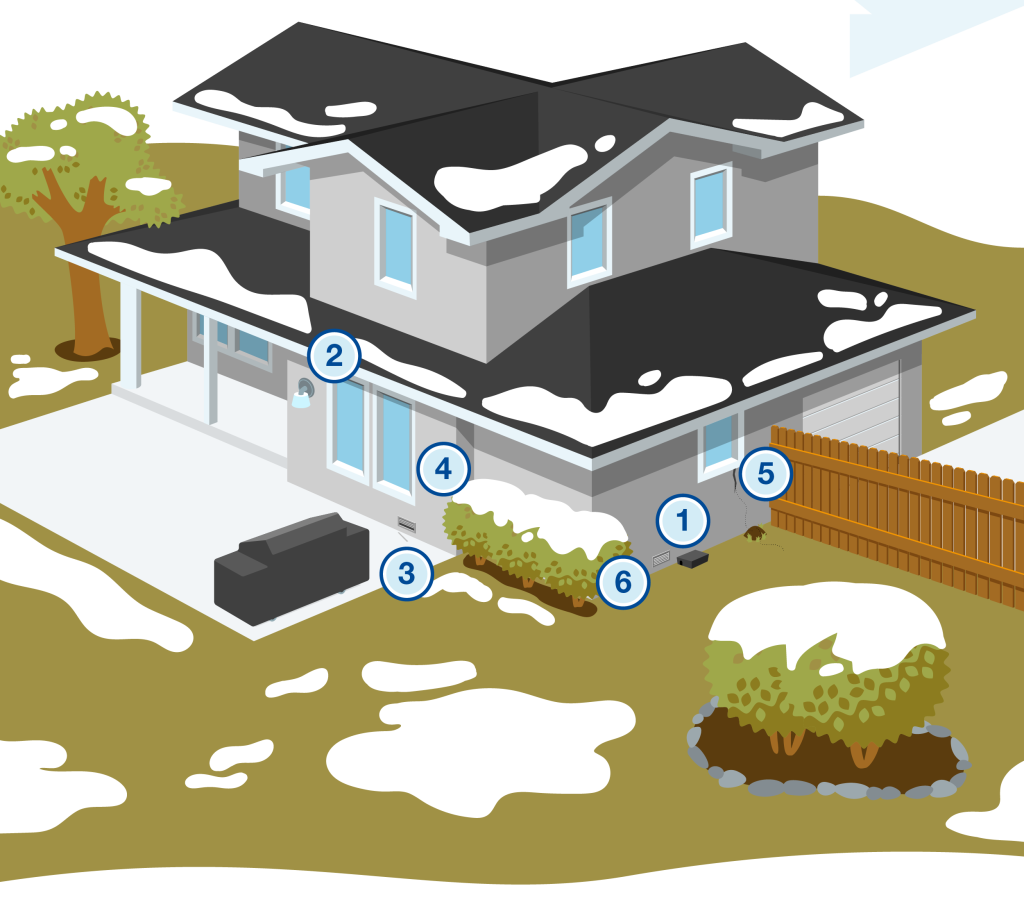Pest Control During Winter Months in Texas: How to Protect Your Home
By Innovation Grounds
When the winter months roll in, many people assume that pests become less of a problem. However, in Texas, where temperatures can fluctuate dramatically, pests are often still very active during the colder months. In fact, winter can be the ideal time for certain pests to invade your home in search of warmth, food, and shelter. As a homeowner, it’s important to understand the types of pests that pose a threat during winter and take proactive steps to keep them at bay. Here’s why pest control during winter is crucial in Texas and how to protect your home from unwanted visitors.

Why Pest Control During Winter is Important in Texas
Texas is home to a wide variety of pests, many of which are notorious for invading homes during the colder months. While it’s true that some pests are less active in the winter, others, including rodents, ants, and spiders, can thrive in indoor environments when the temperatures drop outside. Additionally, with unpredictable weather patterns, you might experience warm spells followed by sudden cold snaps, which can give pests a reason to seek refuge in your home.
Winter pest problems are not just a nuisance—they can also cause significant damage to your home and pose health risks. Rodents, for example, are known to chew through electrical wires, insulation, and even structural elements of your home. Cockroaches and other insects can spread bacteria, while spiders and ants are just plain unsettling.
By staying on top of pest control during the winter months, you can avoid potential damage and ensure that your home remains pest-free all season long.

Common Winter Pests in Texas
Understanding which pests are most likely to invade your home during the winter is the first step in effective pest control. Here are some of the most common pests to watch out for in Texas during the colder months:
1. Rodents (Mice and Rats)
Mice and rats are perhaps the most common winter pests in Texas. As the temperature drops, rodents seek warmth and shelter, often making their way into homes through small cracks, gaps, or vents. Once inside, they can be difficult to get rid of and may cause considerable damage. Rats and mice can chew through walls, insulation, and even electrical wires, which increases the risk of fires.
Rodents also pose a health risk as they are known to carry diseases and parasites, including salmonella, hantavirus, and ticks.
2. Cockroaches
Cockroaches are year-round pests, but they tend to be more active indoors during the winter months. German cockroaches, in particular, prefer warm environments and will readily invade homes, especially in kitchens and bathrooms where food and moisture are abundant. These pests can contaminate food, spread bacteria, and trigger allergic reactions.
3. Spiders
Spiders, including the brown recluse and black widow, are more likely to enter your home as the weather cools. They seek warm, quiet places to nest and can often be found in basements, attics, and closets. While spiders are generally harmless, certain species can deliver venomous bites, so it’s important to address any spider issues promptly.

4. Ants
Certain species of ants, such as Argentine ants and fire ants, can be active during the winter months, especially if they find a warm environment inside your home. They are often attracted to food sources and may invade kitchens and pantries. Fire ants can be particularly dangerous because their stings can cause severe allergic reactions.
5. Termites
While termites are most active during the warmer months, they can still cause significant damage to your home in the winter. Termites do not hibernate and continue to feed on wood throughout the year. If your home has an existing termite infestation, they may continue to damage the structure during the colder months.
6. Silverfish and Pantry Pests
Silverfish, beetles, and other pantry pests may invade your home during the winter in search of food. These pests typically infest stored food items like flour, cereal, and dried goods. Keeping your pantry clean and properly sealed can help reduce the risk of an infestation.

Tips for Pest Control During Winter in Texas
Now that you understand the types of pests that might invade your home, here are some effective tips for controlling pests during the winter months:
1. Seal Entry Points
The first line of defense against winter pests is sealing any potential entry points into your home. Check for cracks and gaps around windows, doors, pipes, vents, and foundations. Use weatherstripping and caulk to seal these areas and prevent pests from getting inside. Rodents, in particular, can squeeze through openings as small as a quarter of an inch, so make sure to inspect your home thoroughly.
2. Maintain a Clean Home
Keeping your home clean is one of the best ways to deter pests. Remove any food crumbs, spills, or grease from kitchen counters and floors. Store food in airtight containers and regularly dispose of garbage. Pay special attention to areas like pantries, basements, and attics, which may not be cleaned as often but can harbor pests looking for food and shelter.
3. Use Traps and Baits
If you’re dealing with rodents or ants, traps and baits can be effective. Snap traps are a quick way to catch mice and rats, while sticky traps can be used for smaller pests like cockroaches and ants. If you prefer a chemical option, use baits that attract rodents or ants and slowly poison them. Be sure to follow all instructions carefully when using traps and baits, and keep them out of reach of pets and children.

4. Keep Your Yard Tidy
While pest control during winter primarily focuses on the indoors, keeping your yard tidy can help reduce the chances of pests entering your home. Trim back tree branches and shrubs that are close to your home, as they can provide easy access points for rodents and insects. Remove any fallen leaves, dead plants, or wood piles where pests might be nesting.
5. Inspect Attics and Crawl Spaces
Rodents often find their way into attics and crawl spaces during the winter months. These areas provide warmth and protection from the cold. Be sure to inspect your attic for signs of rodent activity, such as droppings, chewed insulation, or nests. If you suspect an infestation, contact a professional pest control service for a thorough inspection and treatment.
6. Schedule Regular Pest Inspections
Prevention is key when it comes to winter pest control. Schedule regular pest inspections with a licensed pest control company to ensure that your home remains pest-free. A professional can help identify potential problems early and apply effective treatments to eliminate pests before they become a larger issue.

Conclusion
Pest control during the winter months is crucial in Texas, as the cooler weather can lead to an increase in indoor pests looking for warmth and shelter. By understanding the types of pests that are most likely to invade your home, sealing entry points, and maintaining a clean and well-kept living environment, you can significantly reduce the chances of a winter pest infestation. If you’re dealing with persistent pest problems, don’t hesitate to contact a professional pest control service for assistance. With the right precautions, you can keep your home pest-free throughout the winter and beyond.
By following these tips, you can ensure that your Texas home stays safe and comfortable, even when the temperature drops.



